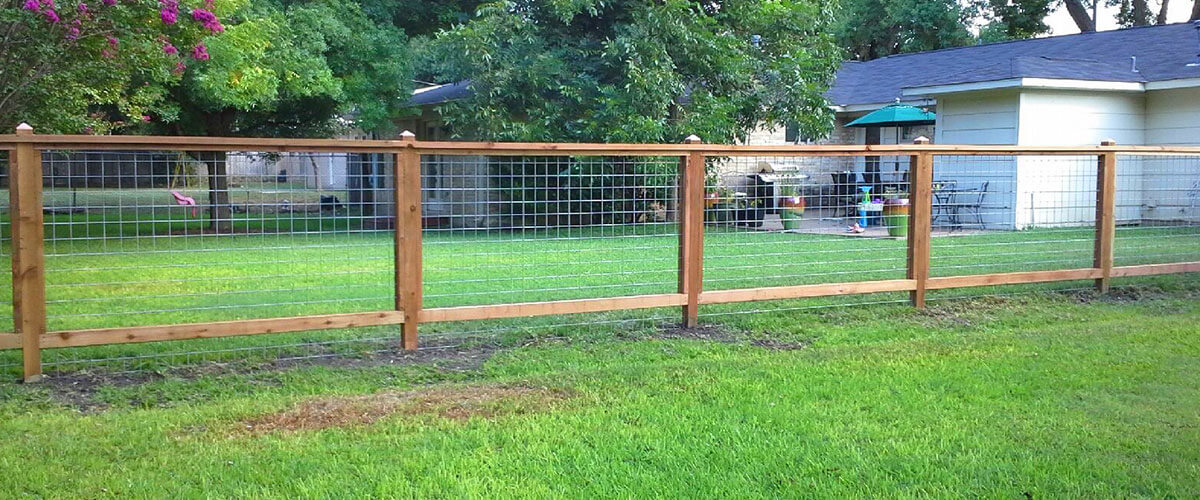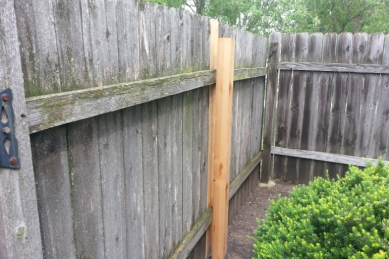
Using expanding foam to fill holes in fence posts can be a fast and effective way to make these structures more stable. Be sure to follow all directions when installing expanding foam. Remove any soil and standing water. Next, spread the expanding foam over the post hole using a small shovel and other equipment. After you have poured foam, make sure to quickly backfill the hole to prevent a large pool.
After choosing the right type and size of expanding foam to use, determine the dimensions of the holes to be filled. This is because expanding foam can quickly expand up to 15x its original volume in just a few seconds. It is important to remember that expanding foam has a tendency to expand quite rapidly, so you have to be very careful when you spray it. If you use expanding foam, be sure to not fill the hole with too much.

Another issue that expanding foam faces is its inability of supporting the weight repair devices. This can lead to permanently loose fence posts. Concrete mixing will also require additional hands and elbow grease. Expanding foam can be faster than digging up and mixing concrete. Use foam with care as it can cause health problems and leak.
It's easier to spread expanding foam than concrete. Concrete requires a heavy truck or trailer to transport, but expanding foam can be applied much faster and is more portable. Furthermore, it is lighter than concrete and can be carried in the trunk. Expanding foam's cost will depend on the amount of time spent making concrete. Before making a decision, make sure you weigh the pros and cons.
Mixing the expanding foam well before you apply it to fence posts is a must. It will take anywhere from 3 minutes to 1 hour for the foam to fully set. The foam will take longer to set if it is exposed to cooler temperatures. To speed up the process, refer to the instructions for expanding foam for fence post. Expanding foam for fence posts can be installed by using a post level. Then, apply the foam evenly to each post.

Concrete is a good option for those who don't want the hassle of pouring concrete. However, it's heavier than expanding foam and has lower water resistance. Expanding foam is much easier to work and less expensive than concrete. It will provide a stronger base for the fence post and protect it from any damage if installed correctly. Also, expanding foam is much easier to work with than concrete.
FAQ
How can you renovate your house without spending a lot of money?
Here are some tips to help you renovate your home without spending too much money.
-
Plan your budget
-
Find out what materials you need
-
Decide where to put them
-
Make a list with the items you need to purchase
-
How much money do you have?
-
Plan your renovation project
-
Start working on your plans
-
Do some research online
-
Ask your family and friends for assistance
-
Get creative!
How can I avoid being ripped off while renovating my home?
To avoid being scammed, it is essential to fully understand the terms of your contract. Before signing any contract, read through the fine print carefully. Don't sign any contracts that aren't complete. Always ask for a copy of the signed contract.
Do I need permits to renovate my house?
Permits are required before you can start any home improvement project. In most cases, you will need a building permit and a plumbing permit. A zoning license may also be needed depending on the type or construction you are doing.
Is it better for floors or walls to be done first?
The best way of starting any project is to determine what you want. It is essential to consider how the space will be used, who will use it, and why. This will help determine if flooring or wall coverings are best.
Flooring may be an option if you are planning to make an open kitchen/living room. Wall coverings are an option if you prefer to keep this space private.
How many times should my furnace filter need to be changed?
This depends on how often your family will use their home heating system. You may need to change your filter more frequently if the temperature drops and you plan on being away from home during colder months. If you're not often out of your home, however, you may be more able to wait for the filter to change.
A furnace filter can last about three months. Your furnace filter should be replaced every three months.
You can also check the manufacturer's recommendations for when to change your filter. Some manufacturers suggest changing your filter every heating season. Others recommend waiting until you see dirt buildup.
What should I do if I want to hire an architect/builder?
You may find it easier to hire someone else to complete your renovations if you own the home. But if your goal is to buy a house, hiring an architect/builder will ensure that you get the home you desire.
Is it less expensive to renovate an existing house or build a new one?
If you're thinking about building a new home, there are two options for you. One option is to buy a pre-built home. This home is ready for you to move into. A custom-built home is another option. This option will require you to hire a builder in order to design and build your dream house.
How much time and effort you put into designing and planning your new home will determine the cost. A custom home may require more effort because you'll likely need to do most of the construction work yourself. But, you also have more control over which materials you choose and where you place them. It might be easier to find a contractor that specializes in custom-built homes.
A new home is usually more expensive than a remodeled home. The reason is that you'll need to pay more for the land, as well any improvements. You will also need to pay inspections and permits. On average, the price difference for a new or remodeled property is between $10,000 and $20,000
Statistics
- Rather, allot 10% to 15% for a contingency fund to pay for unexpected construction issues. (kiplinger.com)
- It is advisable, however, to have a contingency of 10–20 per cent to allow for the unexpected expenses that can arise when renovating older homes. (realhomes.com)
- ‘The potential added value of a loft conversion, which could create an extra bedroom and ensuite, could be as much as 20 per cent and 15 per cent for a garage conversion.' (realhomes.com)
- They'll usually lend up to 90% of your home's "as-completed" value, but no more than $424,100 in most locales or $636,150 in high-cost areas. (kiplinger.com)
- A final payment of, say, 5% to 10% will be due when the space is livable and usable (your contract probably will say "substantial completion"). (kiplinger.com)
External Links
How To
How to Renovate an Old House
To begin with, I would suggest that you should first determine what type of renovation project you want to undertake. This could include everything from simply updating your kitchen appliances to completely transforming the whole house into something new.
Once you've decided on the type of renovation that you want to do, it is time to consider how much money your budget allows you to spend. Sometimes, you might not have enough money to pay the full project cost. If this happens, you might need to make difficult decisions about which areas in your home you can afford to upgrade and which ones to keep the current budget.
Before you start work on your renovations, there are a few things you should consider. It is important to get all permits necessary for your job. It's also worth checking whether you need planning permission to carry out certain types of work. You might have to apply for building permission if you want to add an extension to your home.
Before you start work on the house it is best to check with the local council website to determine if additional permits are required. You should also check whether you require planning permission for any part of the house you plan to renovate. You might also need to check with your insurance provider if you are undertaking major work such as installing a roof.
Next, you will need to decide on the tools and materials that are best suited for your job. There are many options so make sure you take your time and research each one thoroughly. Some of the most common items that people use during their renovation projects include paint, wallpaper paste, flooring, tiles, carpets, insulation, fencing, doors, windows, lighting, plumbing, heating systems, electrical wiring, plasterboard, timber, concrete, bricks, tiling, mirrors, sinks, taps, toilets, washing machines, ovens, refrigerators, microwaves, dishwashers, vacuum cleaners, carpet cleaning equipment, air conditioning units, fireplaces, chimneys, and even garden furniture!
It is important to evaluate the quality of these items when you are shopping for them. Low quality products are more likely to be thrown away after a while, while high-quality products last for a longer time and offer better value. When you are buying any item, ensure that you only purchase what is necessary for the job. Don't buy too many because you could end up wasting precious resources and having to discard large quantities of material. Try to only buy what you actually need.
After you've selected the right materials for your job, you should plan where to store them while working on the property. If you're planning on renovating a large space of your house, you might need storage space. Alternatively, you could ask family members or friends to help you move all the items around.